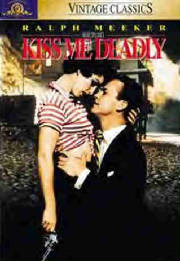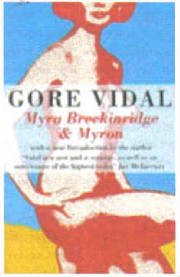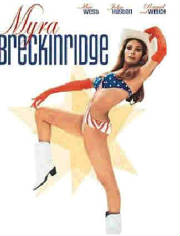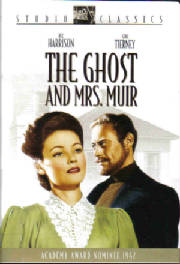 KISS ME DEADLY (1955). Producer/Director: Robert Aldrich. Screenplay by A. I. Bezzerides. The opening sequence
in the film in which Mike Hammer picks up a runaway blonde who has on an overcoat and nothing underneath is taken directly
from Mickey Spillane's tough, fast-paced crime novel, but otherwise there were a number of important changes made for the
film adaptation. For one thing, the picture turns Spillane's hard, brutal, but essentially “moral” private eye
into a sleazy “bedroom dick” who specializes in divorce cases and plays husband against wife and vice versa. Hammer
is also transplanted from New York City to San Francisco, (which makes no sense at all). While Hammer took on the mafia in
the novel, there's absolutely no mention of the Italian organization in the movie. However, the essential storyline remains
the same – more or less -- with crime figures turned into spies, and the ultimate prize that everybody wants converted
from a cache of drugs to a deadly plutonium bomb that goes off at the end in the film's most arresting sequence. Meeker isn't
bad as an alternate Mike Hammer, and Cloris Leachman shows that she had the stuff from the very first
– this was her movie debut – as the gal he picks up in his car at the opening and who quickly winds up murdered
[it's interesting to note that for whatever reasons the other women in the film, all of whom are quite good, weren't able
to sustain a screen career]. Wesley Addy as Hammer's cop-friend Pat [herein more of an enemy] offers an excellent portrait
of unbridled contempt. The scenes with the would-be opera singer and the weaselly morgue guy who gets
his hand slammed in a drawer were not in the book [Hammer is certainly good at bullying men who are no match for him!]. Let's
face it, neither book nor movie are exactly Shakespeare, but both are quite entertaining and vivid, and the film certainly
has a stylish and effective veneer.
 MYRA BRECKINRIDGE (1970). Director: Michael Sarne.
“I am Myra Breckinridge whom no man will ever possess.”
Gore Vidal's satirical and nearly scatological novel Myra Breckinridge was published in 1968, and you have to wonder what he was thinking. While the book is certainly
an original, it seems more along the lines of a John Waters' film with the 300 pound transvestite
Divine than something by a serious American Man of Letters. Yet, the book struck a chord as a somewhat scathing attack on
the Republican, conservative values of the period, the war on immorality and “smut” in movies and television,
and hypocritical attitudes about {homo]sexuality. Conversely – or perversely – the novel probably did Gay Lib
no good either, as it is full of stereotypes, gay-baiting and bashing, and Myra herself – or himself -- is essentially
a sociopath full more of self-hatred [disguised as self-love] than hatred of others. Ironically, Vidal clearly uses Myra and
other characters to express what today we would call politically incorrect comments about Blacks, Jews, Lesbians, and Gays.
This is an author who wants to have his cock – eh, cake – and eat it, too!
Still, there is some fun and suspense as Myra, the transformed Myron,
goes on her mission of “realigning the sexes” and tearing down the masculinity of American men as some sort of
revenge and a way of keeping down the growing and starving population. Myra/Myron is also a spoof on dizzy film buffs/queens
[“like so many would-be intellectuals back east Myra never read books only books about books”]
and their adoration of camp and B players [Myra is especially enamoured of James Craig]. Although it's meant to be taken metaphorically
[one supposes], Myra's rape of Rusty, with its near-pornographic detail, is disturbing. You can't really say that Vidal's
Myra Breckinridge is good – but it is intermittently amusing – and arresting.
 Probably not a good bet for filming – except by John Waters. Instead we
got Michael Sarne, working from a script by himself and producer David Giler. Film critic Rex Reed – who in some ways
could have been the model for Myron -- was wittily [or bitchily] “introduced” as Myron in an acting career that
would last for only one picture. Raquel Welch was signed to play the post-sex change Myra, and isn't as bad as you would imagine
[she parlayed this years later into a snappy turn as a bitchy ex-wife on the CBS night-time soap CPW]. The book is relatively “faithful” to the story of the book, and comes off as a reaction to Vietnam
and the values that whole period engendered. Farrah Fawcett is also surprisingly okay as na´ve young Maryann, with whom Myra
inexplicably falls in love, and Roger Herron is fine as the abused young Rusty. [His rape scene, played for laughs, is discomforting.
While Rusty makes homophobic comments, he seems more na´ve and dumb than hateful, and certainly doesn't deserve to be sexually
assaulted. What might have been metaphorical in the novel is excruciatingly literal on film, and Myra becomes an unsympathetic
sexual predator. Herron apparently never made another picture.] Mae West still has great timing and delivery as the super-agent
and Hollywood cockswoman Leticia Van Allen, and she gets to sing – if you can call it that -- “You gotta taste
all the fruit” and “I'm Sure Hot to Handle.” [Mae gets the best lines. To a cop, she says: “Don't
forget to remind me of the policeman's balls.”] Like the novel, the movie is somewhat condescending to gays even as
it mocks homophobia and other right-wing values. John Huston makes a great Uncle Buck; Calvin Lockhart is good as the outrageous
queen Irving Amadeus; Tom Selleck is sized up by West in one of his first screen appearances; Kathleen Freeman, Grady Sutton
and Andy Devine have cameos; and William Hopper [son of Hedda] from Perry Mason
is seen as a judge. The many clips from old movies – including a lot of Laurel and Hardy – are generally well-used,
even if they infuriated Old Guard Hollywood. Although the ending is taken from the book – Myra becomes Myron because
Maryann loves her but can't fully love another woman – it is so “straight” that it makes Myra
Breckinridge seem positively conventional at heart. Like the novel, the movie isn't very
good but it is at times amusing and arresting. But there was more to come...
|
|
| Maria Montez in "Cobra Woman" |
In 1974 Gore Vidal published his sequel Myron. Equally self-indulgent as the first book, Myron
is more entertaining, suspenseful, and funnier. Myron, an alleged heterosexual Republican, is living with Maryann in wedded
bliss [talk about aesthetic realism!] with a rebuilt penis when he is sucked into the TV set while watching an old 1948 Maria
Montez movie Siren of Babylon [Maria actually made a film called Siren of Atlantis that
year but her co-star was husband Jean-Pierre Aumont and not Vidal's Bruce Cabot]. Myron finds himself
trapped with many other lost souls who can either wander around the movie -- during commercial breaks the actors freeze --
or walk off onto the set and several blocks around it – but no further. They are all gathered in a cheesy motel where
Myra asserts her will and her campaign to realign the sexes, turn many men into transsexuals to prevent
over-population, and bring the Nixonian world back into the glory and glamorous days of MGM in its heyday. Myron and
Myra battle for possession of one body, with Myron waking up to find himself in drag, and Myra plotting to get a surgeon in
to remove her despicable penis. Myra is sucked into the movie itself and becomes Maria Montez while poor Maria winds
up in Myron's body at age ten! The book is bizarre, imaginative, and often hilarious, full of that same sympathetic-but-condescending
– or is it merely mixed up? -- attitude of Myra Breckinridge. Yet the novel pulls one along as you wonder who
will ultimately retain control – Myra or Myron – and if Myra will realize her ambition to become not only the
ruler of MGM but of the world itself -- not to mention a major star.
Or as Myra puts it: “I am always thrilled when someone entirely without talent is able to become through
strenuous and even pathological publicizing of himself a part of the nation's consciousness and for a season famous because
that is our American way.” Myra is smarter than she realizes (thanks to Vidal) but dumber than she looks. She delivers
satiric barbs but is also a target. She contributes to the schizoid tone of Vidal's books because she is both heroine and
villainess. She does not represent the Nixon/Republican/ Moral Majority camp, but she does represent the rise of camp and
kitsch and the decline of literature and reading. In other words, it's no wonder that Myra Breckinridge – book,
movie, and the lady herself – are not only muddled but downright dizzy. William Schoell.
 THE GHOST AND MRS. MUIR (1947). Director: Joseph L. Mankiewicz. Screenplay by Philip Dunne, from
the novel by R. A. Dick. “You can be much more alone with other people than you can by yourself – even if it's
people you love.” Gene Tierney and Rex Harrison are both excellent (although the latter underplays too much in key scenes)
in an adaptation of a 1945 novel about a widow 'haunted” by a dead sea captain when she moves into his house. Wisely,
the film emphasizes the romantic aspects of the storyline more than the novel does. About loneliness and impossible love if
it is about anything, the picture also has a subtext (as does the novel) of feminine independence and being true to oneself
instead of conforming to society's and your family's expectations. Beautiful cinematography, excellent direction, and Bernard
Herrmann's most exquisite score (much of which was originally written for his opera Wuthering Heights) make this charming, poignant film a top flight example of Hollywood romantic fantasy. There are moments of internal
illogic that might not stand up to close scrutiny, a few things one could quibble over, but the movie works on an emotional
and not an intellectual level.
BOOK VS FILM: The film is essentially
faithful to the spirit of the novel if not to every plot point. In the book Mrs. Muir (who is perhaps a “harder”
character) not only has a daughter but a little boy, as well, who takes after his snobbish aunt (although he, too, mellows
with age). A funny scene wherein Mrs. Muir's daughter's future in-laws discuss the captain's autobiography Blood
and Swash without realizing that she is the “author” and Captain Gregg sweeps
through the room as an ill wind was, regrettably, not included in the movie. In the novel Gregg does not go away for decades
[in the film he obviously finds it necessary to absent himself from the life of the one he loves and can never have -- until
death, at least]. Gregg has Mrs. Muir apologize to her housekeeper for snapping at her at the end of the book, and Mrs. Muir
asks him about the after-life which, he claims, is too difficult for living folk to comprehend. -- William Schoell
|

